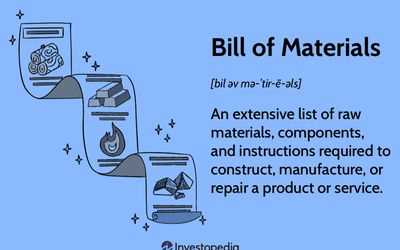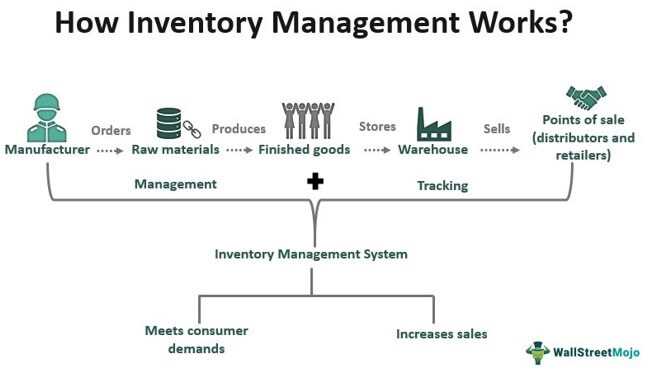What is Inventory Management?

Inventory management refers to the process of overseeing and controlling the flow of goods and materials within a company. It involves the management of inventory levels, ordering, storage, and tracking of inventory items to ensure optimal efficiency and cost-effectiveness.
Definition and Importance
Inventory management is a crucial aspect of any business, as it directly impacts the company’s profitability and customer satisfaction. It involves maintaining the right balance between having enough inventory to meet customer demand and minimizing excess inventory that can tie up capital and increase storage costs.
The main goal of inventory management is to ensure that the right products are available in the right quantities at the right time. This requires accurate forecasting of demand, efficient order processing, and effective inventory control systems.
Methods of Inventory Management
There are various methods and techniques used in inventory management to optimize inventory levels and improve operational efficiency. Some of the commonly used methods include:
| Method | Description |
|---|---|
| Just-in-Time (JIT) Method | This method aims to minimize inventory levels by receiving goods from suppliers only when they are needed for production or customer orders. It helps reduce carrying costs and the risk of obsolescence. |
| First-In, First-Out (FIFO) Method | This method assumes that the first items purchased or produced are the first ones to be sold or used. It ensures that older inventory is sold first, reducing the risk of spoilage or obsolescence. |
Overall, effective inventory management is essential for businesses to maintain a competitive edge, improve customer satisfaction, and optimize their financial performance.
Definition and Importance of Inventory Management

Inventory management refers to the process of overseeing and controlling the flow of goods and materials within a company. It involves the management of inventory levels, ordering, storage, and tracking of products to ensure efficient operations and customer satisfaction.
Inventory management is crucial for businesses of all sizes and industries. It plays a vital role in optimizing supply chain operations, reducing costs, and maximizing profitability. Effective inventory management allows businesses to meet customer demand, minimize stockouts, and avoid excess inventory.
One of the key aspects of inventory management is maintaining the right balance between supply and demand. By accurately forecasting customer demand and adjusting inventory levels accordingly, businesses can avoid overstocking or understocking products. This helps in preventing lost sales opportunities and reducing carrying costs.
Another important aspect of inventory management is ensuring product quality and freshness. By implementing proper inventory control measures, businesses can prevent the accumulation of expired or obsolete products. This not only helps in maintaining customer satisfaction but also reduces waste and improves overall efficiency.
Inventory management also plays a significant role in cash flow management. By optimizing inventory levels, businesses can free up capital that would otherwise be tied up in excess inventory. This allows for better utilization of financial resources and investment in other areas of the business.
In summary, inventory management is a critical function for businesses to ensure smooth operations, customer satisfaction, and financial stability. By implementing effective inventory management techniques, businesses can achieve cost savings, improve productivity, and gain a competitive edge in the market.
Methods of Inventory Management
1. Just-in-Time (JIT) Method
The Just-in-Time (JIT) method is a popular inventory management technique that aims to minimize inventory holding costs by receiving goods only when they are needed for production or sale. This method relies on accurate demand forecasting and strong supplier relationships to ensure that the right quantity of goods is delivered at the right time.
2. First-In, First-Out (FIFO) Method
The First-In, First-Out (FIFO) method is another commonly used inventory management technique. This method assumes that the first items purchased or produced are the first ones to be sold or used. It follows a chronological order, where the oldest inventory is used or sold first.
The FIFO method is particularly useful for businesses that deal with perishable goods or products with a limited shelf life. By selling or using the oldest inventory first, businesses can reduce the risk of spoilage or obsolescence. Additionally, FIFO can help businesses maintain accurate cost records and comply with accounting standards.
To implement the FIFO method, businesses need to keep track of the purchase dates and costs of their inventory. This can be done manually or with the help of inventory management software.
| Advantages of FIFO Method | Disadvantages of FIFO Method |
|---|---|
| Reduces the risk of obsolescence | Does not account for changes in market value |
| Helps maintain accurate cost records | Requires accurate tracking of inventory purchase dates and costs |
| Complies with accounting standards | May result in higher tax liabilities |
Just-in-Time (JIT) Method
The Just-in-Time (JIT) method is a popular inventory management technique that focuses on minimizing inventory levels by ensuring that materials and products are delivered just in time for production or sale. This method aims to eliminate waste, reduce costs, and improve efficiency in the supply chain.
With the JIT method, inventory is viewed as a liability rather than an asset. Instead of holding large quantities of inventory, businesses using this method rely on close coordination with suppliers to deliver materials and products exactly when they are needed. This approach helps to prevent overproduction, reduce storage costs, and minimize the risk of obsolescence.
The JIT method requires a high level of trust and cooperation between the business and its suppliers. It relies on accurate demand forecasting and efficient communication to ensure that the right quantities of materials and products are delivered at the right time. This method is particularly beneficial for businesses with limited storage space or those operating in industries with rapidly changing customer demands.
Implementing the JIT method can bring several advantages to businesses. Firstly, it reduces the need for large inventory holding, freeing up capital that can be invested in other areas of the business. Secondly, it helps to identify and eliminate inefficiencies in the supply chain, leading to cost savings. Thirdly, it improves customer satisfaction by ensuring that products are available when needed and reducing lead times.
However, the JIT method also comes with its challenges. It requires a high level of coordination and communication with suppliers, which can be difficult to achieve, especially in complex supply chains. It also leaves businesses vulnerable to disruptions in the supply chain, such as delays or quality issues with suppliers. Therefore, businesses considering implementing the JIT method should carefully evaluate their supply chain capabilities and the potential risks involved.
First-In, First-Out (FIFO) Method
The First-In, First-Out (FIFO) method is a commonly used inventory management technique that follows the principle of using the oldest inventory first. This method assumes that the first items purchased or produced are the first ones to be sold or used.
Under the FIFO method, the cost of goods sold (COGS) and the value of ending inventory are calculated based on the assumption that the earliest acquired inventory is sold first. This means that the cost of the most recently purchased or produced inventory is matched with the cost of goods sold last.
Advantages of FIFO Method
1. Accurate Cost Calculation: The FIFO method provides a more accurate calculation of the cost of goods sold and ending inventory as it matches the current market prices with the most recent inventory purchases.
2. Better Profit Calculation: By using the cost of the oldest inventory, the FIFO method can result in a higher profit calculation, especially during periods of rising prices.
3. Realistic Inventory Valuation: FIFO reflects the actual flow of goods in most industries, where the oldest inventory is typically sold or used first.
Disadvantages of FIFO Method
1. Inflation Impact: During periods of inflation, the FIFO method can result in higher inventory valuation and lower cost of goods sold, which may not accurately reflect the current market conditions.
2. Tax Implications: The use of FIFO method can have tax implications, as it may result in higher taxable income due to the higher valuation of inventory.
3. Complexity: The FIFO method can be more complex to implement and track, especially in industries with a large number of inventory items and frequent purchases.
Overall, the FIFO method is widely used in inventory management due to its simplicity and alignment with the actual flow of goods. However, it is important for businesses to consider the potential impact of inflation and tax implications when choosing this method.

Emily Bibb simplifies finance through bestselling books and articles, bridging complex concepts for everyday understanding. Engaging audiences via social media, she shares insights for financial success. Active in seminars and philanthropy, Bibb aims to create a more financially informed society, driven by her passion for empowering others.
